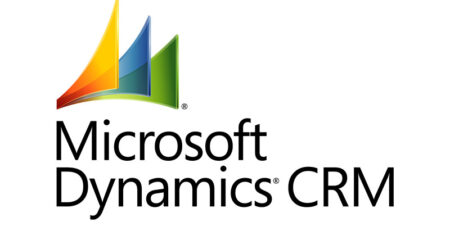SAP On-Premises vs. SAP Cloud: Benefits and Challenges
As one of the global leaders in enterprise resource planning (ERP) solutions, SAP offers its customers the choice between a traditional on-premises deployment model and the increasingly popular cloud-based model. Both approaches have unique benefits and challenges, and the choice between them depends on the specific business needs of each organization. In this article, we’ll explore the differences between SAP On-Premises and SAP Cloud, focusing on their advantages and the challenges businesses may face when implementing these solutions.
SAP On-Premises: Traditional Control and Stability
AP On-Premises is a classic approach to software deployment, where the ERP system is installed on the company’s local IT infrastructure. In this model, the organization has full control over all aspects of the system, from managing servers and data security to handling software updates.
Benefits of SAP On-Premises:
Full control over infrastructure
One of the greatest advantages of SAP On-Premises is complete control over the IT infrastructure. The organization can freely customize the system, manage resources, and decide when to implement updates. This approach is particularly appealing for companies operating in highly regulated industries like finance or pharmaceuticals, where strict compliance with data privacy and security standards is critical.
Customization and personalization
SAP On-Premises allows for deep customization of the system, which is important for businesses that require non-standard business processes. Companies can tailor the software to their specific needs without the limitations of cloud templates.
Data security
For many organizations, data security is a top priority, and the on-premises model allows them to maintain full control over where and how their data is stored. For businesses dealing with highly sensitive data, local security management may be the preferred solution.
Stability and business continuity
SAP On-Premises provides a stable work environment without the dependence on external cloud service providers. For companies operating in regions with limited access to high-quality internet connections, having on-site infrastructure can offer greater reliability and business continuity.
Challenges of SAP On-Premises:
High upfront costs
Implementing SAP On-Premises requires purchasing and maintaining your own IT infrastructure. This includes the costs of servers, networking equipment, and software licenses. In addition, maintenance, support, and management of the infrastructure can add significant expenses, especially for small and medium-sized businesses.
Long implementation time
The deployment process for SAP On-Premises can be time-consuming and complex. It requires engagement from IT teams, conducting thorough analyses, and customizing and testing the system, which may take months or even years.
Limited scalability
Scaling an on-premises system is limited by the physical infrastructure. When a business needs to increase its IT resources, it incurs additional costs for new hardware and infrastructure expansion.
Managing updates and technical support
Companies using SAP On-Premises are responsible for managing software updates and system maintenance. In the event of technical issues, organizations must rely on internal IT teams or external consultants, which can generate additional costs and risks of downtime.
SAP Cloud: Flexibility and Innovation in the Cloud
SAP Cloud is a cloud-based deployment model in which the ERP system is delivered as a service (SaaS). In this model, the cloud provider, such as SAP, is responsible for the IT infrastructure, system updates, and maintaining data security.
Benefits of SAP Cloud:
Lower upfront costs and flexible payment model
SAP Cloud eliminates the need for high upfront costs associated with purchasing IT infrastructure. The subscription model (pay-as-you-go) allows companies to pay only for what they use, significantly reducing the cost of deployment, especially for smaller organizations.
Faster implementation
Cloud solutions can be deployed much faster than on-premises systems. With ready-to-use cloud environments, companies can launch their ERP system in a matter of weeks or even days, speeding up the business’s digital transformation process.
Scalability and flexibility
SAP Cloud offers the flexibility to easily scale resources as the business grows. Whether it’s an increase in users or the need for more computing power, cloud providers can quickly meet these demands, which is harder to achieve with an on-premises system.
Automatic updates and innovation
In the cloud model, SAP is responsible for regular system updates, including the implementation of new features and security patches. This means that businesses using SAP Cloud always have access to the latest technologies and innovations without the need to manage these processes themselves.
Integration with modern technologies
SAP Cloud integrates seamlessly with modern technologies, such as artificial intelligence (AI), machine learning (ML), and the Internet of Things (IoT). This allows companies to easily incorporate cutting-edge solutions into their ERP systems, enabling faster innovation.
Challenges of SAP Cloud:
Data security and compliance
For some companies, especially in highly regulated sectors (e.g., finance, pharmaceuticals), using the cloud may raise concerns about data security and regulatory compliance. While cloud providers like SAP implement advanced security measures, some organizations may feel less comfortable not having full control over their data storage.
Dependence on internet access
Using SAP Cloud requires a reliable internet connection. In regions with poor-quality internet access, this can pose a challenge, especially if outages disrupt access to the ERP system.
Limited customization
Although SAP Cloud offers significant flexibility, customization options may be limited compared to SAP On-Premises. Cloud solutions tend to be more standardized and may not meet all the unique requirements of a business.
SAP On-Premises vs. SAP Cloud: A Comparison
| Feature | SAP On-Premises | SAP Cloud |
|---|---|---|
| Deployment model | Local infrastructure | Cloud (SaaS) |
| Upfront costs | High (hardware, licenses) | Low (subscription model) |
| Implementation time | Longer | Faster |
| Scalability | Limited by infrastructure | High and flexible |
| Updates | Managed by the company | Automatic, managed by SAP |
| Data security | Full local control | Managed by the cloud provider |
| Customization | Deep customization | Limited customization |
| Data management | Managed locally | Managed in the cloud |
The choice between SAP On-Premises and SAP Cloud depends on the company’s specific needs and priorities. SAP On-Premises offers full control, deep customization, and stability but comes with high costs and longer implementation times. On the other hand, SAP Cloud provides flexibility, faster deployment, and automatic updates, though it presents challenges regarding security, compliance, and customization.
Ultimately, the decision hinges on whether a business prioritizes control and stability or values scalability, innovation, and cost efficiency. Regardless of the choice, both SAP solutions are powerful tools that support companies in achieving their digital transformation goals.











